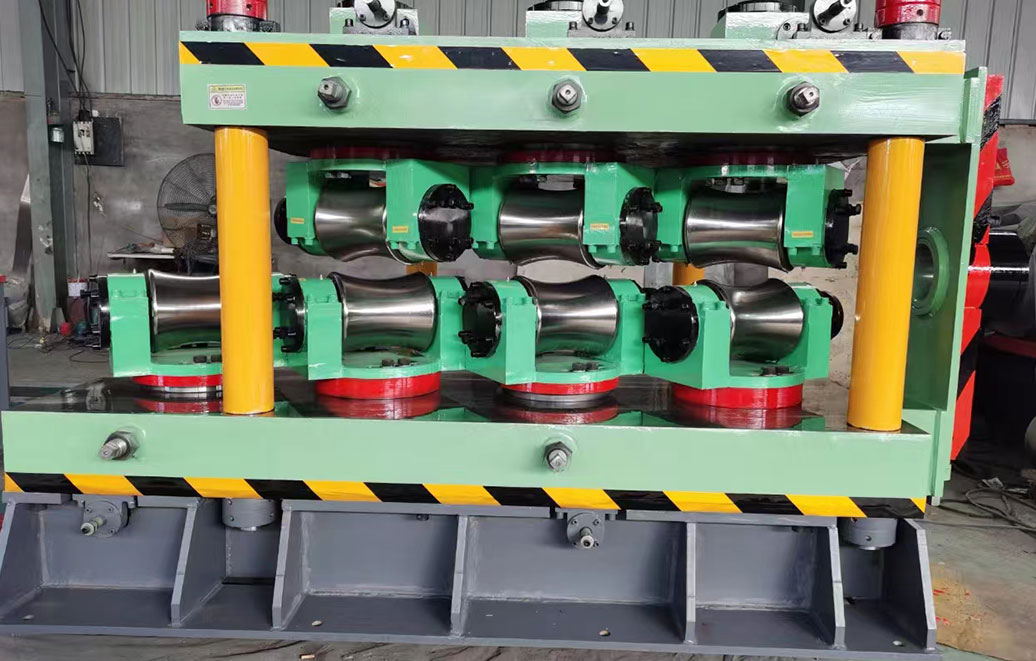steel cold rolling mill process
Understanding the Steel Cold Rolling Mill Process
Steel cold rolling is a fundamental industrial process used to transform steel into thinner, tighter sheets and strips while enhancing its mechanical properties. Cold rolling is distinct from hot rolling; the primary difference lies in the temperature of the steel being processed. In hot rolling, the temperature exceeds the recrystallization temperature of the steel, whereas cold rolling occurs at room temperature or slightly above, allowing for precise control over thickness and surface finish.
The Cold Rolling Process
The cold rolling process involves several key steps. Initially, the raw steel is produced, typically in the form of hot-rolled coils. These coils undergo a series of preprocessing activities to remove scales and impurities. This may include pickling, which uses chemical solutions to dissolve oxides, providing a cleaner surface for rolling.
Once the steel is prepared, the actual cold rolling begins. The steel strip is fed into a series of rollers arranged in a tandem mill configuration. Each pass through the rollers reduces the thickness of the steel sheet. The rollers are powered and set at specific distances to ensure accurate thickness reduction. As the steel passes through the rollers, it experiences both deformation and strain-hardening, which significantly increases its strength and hardness.
Cold rolling can also involve several rolling passes, where the strip is re-fed into the mill to achieve the desired thickness and surface properties. The number of passes required depends on the initial thickness of the steel and the final specifications needed by the end-user.
Benefits of Cold Rolling
One of the primary advantages of cold rolling is the dimensional accuracy it offers. The ability to produce steel sheets with precise thickness tolerance is vital for many industries, including automotive, aerospace, and construction. Additionally, cold rolling enhances the surface finish of the steel, making it smoother and more visually appealing. This refined surface quality is particularly important in applications where aesthetics are crucial, such as in appliance manufacturing and architectural design.
Furthermore, cold rolling imparts better mechanical properties to the steel. The cold working process increases the yield strength and hardness of the material, making it more suitable for high-stress applications. This strength enhancement is a result of the dislocation structures that form within the steel during the deformation process. Consequently, cold-rolled steel is often used in components requiring enhanced durability and resistance to wear.
steel cold rolling mill process

Applications of Cold Rolled Steel
Cold rolled steel products have a broad range of applications across several industries. In the automotive sector, cold-rolled sheets are used for body panels, brackets, and other structural components. Their ability to maintain shape and rigidity under stress makes them ideal for creating safe and reliable vehicle structures.
In construction, cold rolled steel is often utilized in the fabrication of frames and supports
. The precise dimensions and enhanced strength allow for the construction of sturdy buildings and infrastructures while preserving material efficiency.Appliances and consumer goods also benefit from cold rolled steel. It is frequently used in manufacturing refrigerators, ovens, and washing machines, where a combination of aesthetic appeal and structural integrity is required.
Challenges in Cold Rolling
Despite its many advantages, the cold rolling process does pose certain challenges. One significant issue is the potential for defects such as warping or surface imperfections, especially when dealing with thinner gauges of steel. Maintaining consistency in the rolling process is critical to avoiding these defects.
Additionally, the cold rolling process requires substantial energy and can lead to increased production costs. Manufacturers must continuously assess the balance between energy consumption, output quality, and production efficiency to remain competitive in the market.
Conclusion
The steel cold rolling mill process is a critical stage in the production of steel products. It offers numerous benefits, including increased strength, precision, and surface quality. As industries continue to evolve and demand higher performance materials, the cold rolling process will remain pivotal in delivering the necessary characteristics to meet these demands. Through ongoing advancements in technology and techniques, the future of cold rolled steel looks promising, providing essential solutions across a multitude of applications.
-
High Frequency Straight Seam Welded Pipe Production Line-BzZhou Xinghua Machinery Equipment Manufacturing Co., LTD.|Precision Welding, High EfficiencyNewsJul.30,2025
-
High Frequency Straight Seam Welded Pipe Production Line|BzZhou Xinghua|Precision Welding&EfficiencyNewsJul.30,2025
-
High Frequency Straight Seam Welded Pipe Production Line - BzZhou Xinghua|Precision Engineering&EfficiencyNewsJul.30,2025
-
High-Frequency Straight Seam Welded Pipe Production Line-BzZhou Xinghua Machinery Equipment Manufacturing Co., LTD.NewsJul.30,2025
-
High-Frequency Straight Seam Welded Pipe Production Line-BzZhou Xinghua Machinery Equipment Manufacturing Co., LTD.|Precision Manufacturing, High EfficiencyNewsJul.30,2025
-
High Frequency Straight Seam Welded Pipe Production Line-BzZhou Xinghua Machinery Equipment Manufacturing Co., LTD.|Precision Steel Pipe Manufacturing&Industrial EfficiencyNewsJul.29,2025


